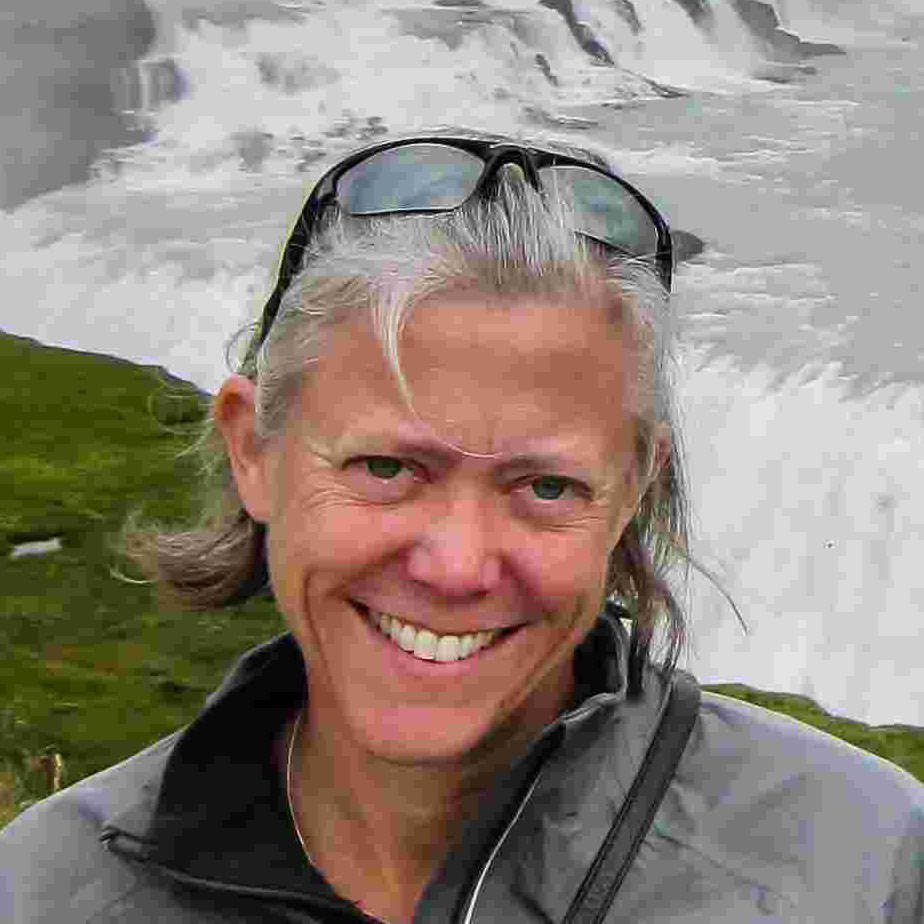On a recent winter day in Juneau, two of my colleagues headed out to Montana Creek to collect some stream water samples. The cold weather had formed a thick layer of ice over the creek, with pockets of open water here and there along the streambed. Being careful not to slip, Jason Fellman, a University of Alaska Southeast faculty scientist, and his assistant for the day, Emily Whitney, quickly dropped an instrument called a sonde into the chilly stream to collect data on temperature and water quality, and then collected several samples in bottles to be analyzed in the lab later.
Jason is just one of several scientists I work with at the Alaska Coastal Rainforest Center at UAS (ACRC). Jason studies how flows change over seasons and how water quality differs between different kinds of streams. Montana Creek is a brown water stream because it drains an area rich in forests and muskegs. If you stand at the spot where it meets the Mendenhall River, you can see the mixing of the bluish glacial water from the Mendenhall with the brown water from Montana Creek. These waters differ in more than just color; they carry different kinds of particles and nutrients and provide diverse habitats for fish and other organisms. Jason’s work into the variability in streamflow and chemical characteristics is just one project in a vast undertaking to understand the connections between land and sea here in southeast Alaska, and how these linkages sustain and support our communities and way of life.
The ACRC is leading the charge on this integrated research program, along with partners throughout southeast Alaska, British Columbia, and Washington. We are seeking to understand how rainfall and glacial melt transport nutrients like carbon, nitrogen and iron from forests and wetlands down to the ocean, and how these nutrients ultimately get used. This fresh water from the thousands of streams and rivers in southeast Alaska drives ocean currents, changes the chemistry of ocean water, and provides essential building blocks for marine food webs. Our world-class fisheries depend on these connections, and our ability to manage these resources in a sustainable way hinges on the depth of our knowledge about processes occurring across our coastal margin.
Animal and human health also depend on understanding how our ecosystem works. For instance, mercury also gets transported in stream water, along with beneficial nutrients. Mercury makes its way into the atmosphere from coal-burning power plants in China, gets transported by trade winds across the Pacific, and is deposited by rain and snow across Alaska. Mercury can be flushed from wetlands into streams and make its way into the marine food chain, affecting wildlife and human health. Understanding how this happens, and how different types of watersheds and weather patterns influence the movement and uptake of mercury, is important to all of us that live in Southeast Alaska.
The ACRC is also building the practical knowledge needed to prepare for and adapt to change. We are helping to support a researcher who is estimating the amount of water that is held in Suicide Basin, so that we can better predict the severity of glacial outburst floods on the Mendenhall River. We have installed of ocean acidification monitoring equipment on the ferry Columbia to provide continuous data on nearshore marine conditions when the vessel is underway. We are working with the Sitka Tribe to collect data about paralytic shellfish toxin events so that we can understand how a changing climate is affecting these dangerous outbreaks. And we are working with climate modelers and hydrologists to provide state and federal transportation infrastructure engineers with better predictive models of flood events into the future.
The water samples Jason collected from under the ice at Montana Creek a few weeks ago will join hundreds of other samples drawn from other streams at weekly intervals over the past several years by faculty and students at UAS. Data from the stream project feeds into many of the other projects listed above, and collectively, this work is providing insight into the complex web of interactions among climate, forests and wetlands, fresh water, marine habitats, and people. Here as everywhere, ecosystem science and community sustainability go hand in hand.
• Dr. Allison Bidlack is an Associate Professor of Environmental Sciences and the Director of the Alaska Coastal Rainforest Center at the University of Alaska Southeast and lives in Juneau. “Sustainable Alaska” is a recurring column, appearing on the first Friday of every month. It’s written by UAS Sustainability Committee members who want to promote sustainability. The views expressed here do not necessarily represent the views of the University of Alaska Southeast.

